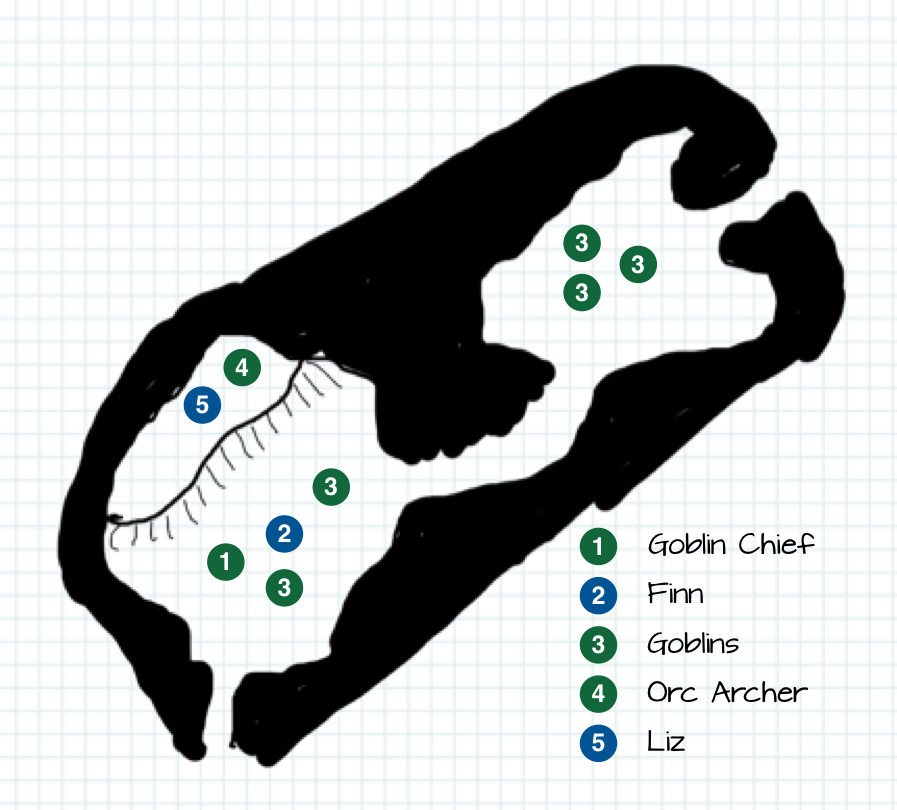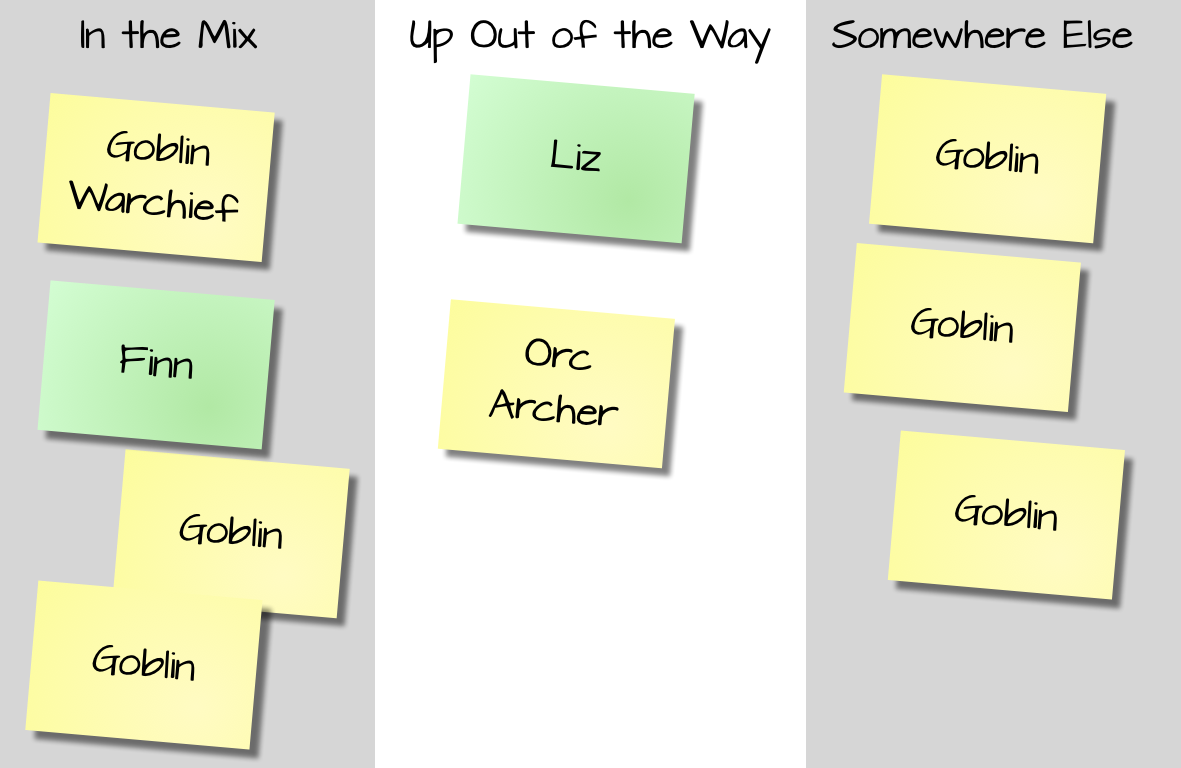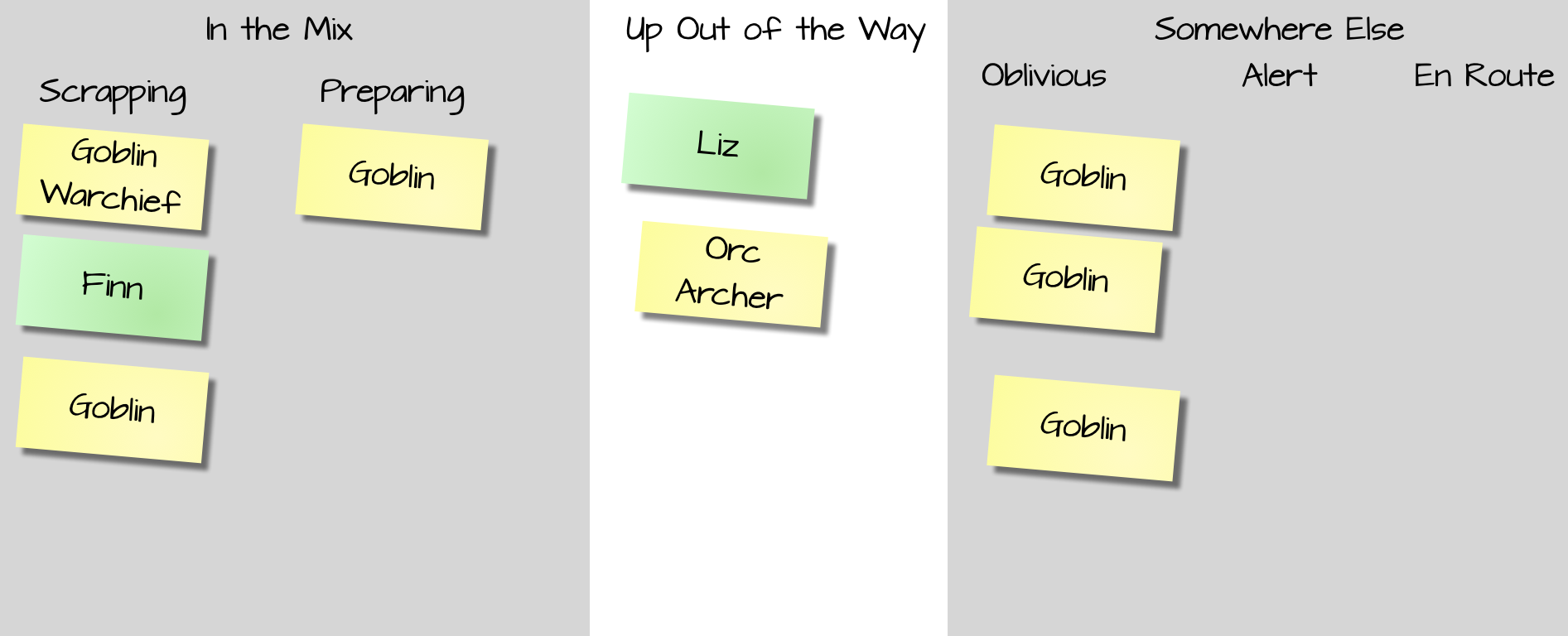So, here’s a thing. Imagine a simple 3 zone fight:
Easy to map, easy to adjudicate, but the thing that kind of struck me is that if I don’t want to draw a map (even a simple one) I could really just represent the fight like this:
I admit, this has a certain appeal, since it uses the tools that I have on hand, and for a game like Dungeon World, where I’m really just needing to keep a general sense of the fiction, it has a loe of appeal.
But that got me thinking and it struck me there’s no reason you can’t do, say:
This is very rough, but it strikes me that this becomes a useful way to handle states and communicate threats (or signal hard moves) dynamically. In my mind, preparing means the goblin is about to unleash a whammy, and unless Finn or Liz do something about it (but to do so means not focusing on more immediate threats).
I need to chew on this a bit more. I’m not sure if this can be standardized enough to be reproducible, but this is something I’m going to keep in mind for future scenes, especially those with many moving parts but less strict geography (such as a large social event) where position on the chart could also be a measure of progress.



13th Age has a similar system for combat. IIRC: Engaged, Near, Far, Out of Range. It took a movement action to go between these distances. Weapons were based on these: Melee, Thrown, Missle, too far.
Yah. A few other games abstract location and position too, and those are definitely the ones that are easier to map to an approach like this.
Sounds like you are thinking of using this as a general framework for all conflicts, a “conflict map” if you will.
Would it be possible to codify this, boil this down so it’s readily applicable across many different types of conflict?
And once you did – then what would we do with it?
That is probably where it’s going, but I need to run it through a few cycles of testing to see what works vs what’s just nice on paper.
Looks a lot like Zones from FATE.
Yep – that’s pretty much exactly where it started from – that first map is, in my mind, a 3 zone map.
Looks a bit Kanban to me. If you start running fights with Jira, I’m outa here.
There’s totally some Kanban. But Jira? I’m not a MONSTER.
When I first glanced at the top illustration, I thought Liz, in the “Up Out of the Way” zone, must be sneaking up to backstab the archer who was about to rain down arrows on the “In the Mix” zone.
Treasure Awaits! is another system that uses abstract zones like this. I think the zones are “closest”, “farthest”, “enemy”, “behind”, and “sneaking”–all are relative to the enemy, except, um, “enemy”. If you’re in closest, you can use melee; farthest, ranged. One that I really like “Sneaking”. If you spend two turns undetected in this zone, you move to “behind”, and can backstab; then, you’re moved to “closest”.
I think the kanban style actually captures this last bit better. I love it.
I certainly plan to try this out in my next Fate game. It’s easy enough to use tokens and minis in addition to paper, if the kanban is laid flat on the table (maybe because it’s actually a gaming mat we already use 🙂 )
It also reminds me of Diaspora, which uses metaphorical zones to represent states in social conflict. (E.g. if the PCs are trying to sway the feeling of a populace toward rebellion, the zones may be things like “apathetic”, “concerned”, “active”, “on a tear”, “out of control”.) It can include barriers and the other FATE mechanics. And of course the conflict would include NPCs which are trying to turn the conflict in the other direction, or even multiple factions in a larger, 2-dimensional map.
My brain immediately went to “social combat” in Diaspora. It can be set up so that position indicates progress toward a goal (e.g. swaying public opinion) rather than physical position. I’m sure you already thought of that. 🙂